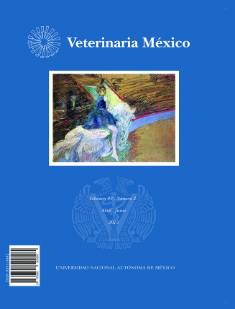Maintenance behaviour and cortisol levels in bottlenose dolphins (Tursiops truncates) in closed and open facilities
Main Article Content
Abstract
Few studies have been published regarding the influence of the environment on the behaviour and welfare of captive dolphins and most of them have been in closed facilities. The aim of this study was to assess the time budget in fast and slow swimming, counter clockwise and clockwise swimming, as well as the state of rest in dolphins staying in closed and open facilities in daytime and evening hours. In addition, to give further information about the welfare state between dolphins in closed and open facilities, serum cortisol levels were compared. Six dolphins Tursiops truncatus in open facilities and four dolphins of the same species in closed facilities were used. There by, a focal sampling was used to obtain the data; 36 hours observing in open facilities and 48 in closed ones. Twenty blood samples were obtained from the ten dolphins in order to measure the serum cortisol, using radioimmunoassay. The locomotion bouts in swimming were higher in open facilities than in closed dolphinariums (P < 0.05); additionally, the outcome showed higher time in fast clockwise swimming (P < 0.05) with dolphins staying in open facilities, and more resting time (P < 0.05) in closed dolphinariums. There were no differences in the average level of cortisol between both facilities (P > 0.05). The outcome obtained in this study helped to know how dolphins face up captivity in two kinds of facilities, and so to improve care and management.
Keywords:
Tursiops truncatus Behaviour Cortisol Welfare
Article Details
License

Veterinaria México OA by Facultad de Medicina Veterinaria y Zootecnia - Universidad Nacional Autónoma de México is licensed under a Creative Commons Attribution 4.0 International Licence.
Based on a work at http://www.revistas.unam.mx
- All articles in Veterinaria México OA re published under the Creative Commons Attribution 4.0 Unported (CC-BY 4.0). With this license, authors retain copyright but allow any user to share, copy, distribute, transmit, adapt and make commercial use of the work, without needing to provide additional permission as long as appropriate attribution is made to the original author or source.
- By using this license, all Veterinaria México OAarticles meet or exceed all funder and institutional requirements for being considered Open Access.
- Authors cannot use copyrighted material within their article unless that material has also been made available under a similarly liberal license.



